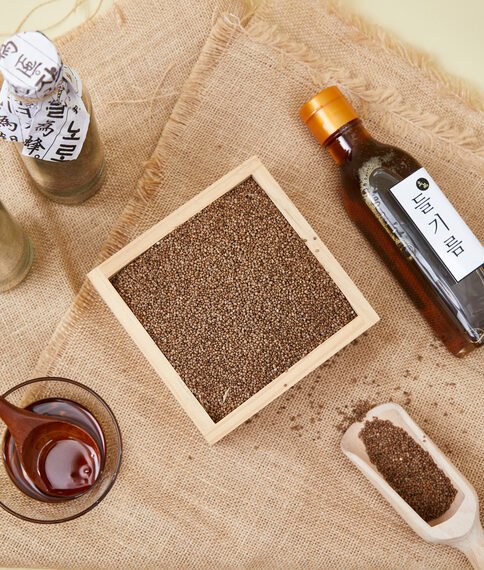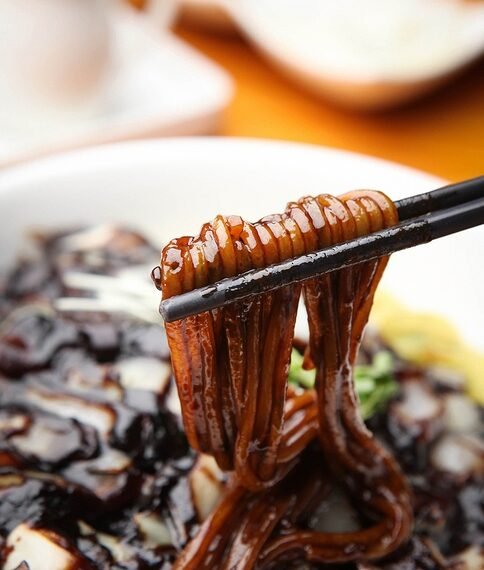Step into the vibrant world of Korean cuisine with the enticing addition of Korean sesame oil, known as Chamgireum. This beloved ingredient has been a staple in Korean cooking for centuries, deeply rooted in both culinary and cultural traditions. Made from roasted and ground sesame seeds, this versatile oil offers a nutty, rich, and slightly smoky flavor that elevates marinades, seasonings, and dipping sauces. Not only does sesame oil add a delightful depth to your dishes, but it also boasts a variety of health benefits, from promoting gut health to aiding in skin healing and heart health. Whether you’re drizzling it on top of a finished dish or incorporating it into your favorite Korean recipes, exploring the world of Korean sesame oil opens up a realm of culinary delights waiting to be discovered.
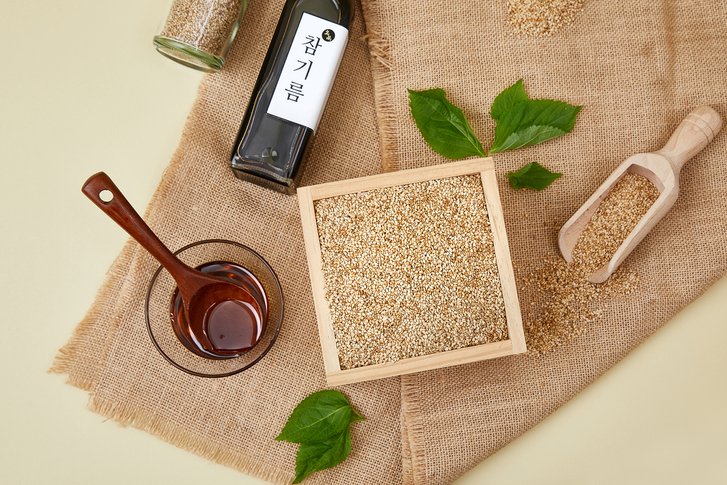
The Origins of Korean Sesame Oil
Introduction to Korean sesame oil
Korean sesame oil, also known as Chamgireum, is a popular ingredient used in marinades, seasonings, dipping sauces, and as a finishing oil. It is an essential element in Korean cuisine and adds depth and richness to dishes. Sesame oil is made from roasted and ground sesame seeds, which give it its distinctive nutty flavor and aroma.
Historical significance in Korean cuisine
Koreans have been using sesame oil for centuries, and it is deeply rooted in their culinary traditions. It is believed to have been introduced to Korea during the Three Kingdoms period and has since become an integral part of Korean cooking. Sesame oil is not only prized for its flavor but also for its cultural significance. It is often associated with traditional Korean dishes and is a symbol of authentic Korean cuisine.
Traditional methods of making sesame oil
Traditionally, sesame oil is made by roasting sesame seeds and then grinding them into a paste. The paste is then heated and pressed to extract the oil. This method results in a pure and aromatic oil that retains the natural flavors of the sesame seeds. While modern production methods have evolved, many Korean households still prefer to make their sesame oil using these traditional methods, as it yields a superior product.
The Flavor Profile of Korean Sesame Oil
Roasted and ground sesame seeds
The flavor of Korean sesame oil is derived from the roasting and grinding of sesame seeds. Roasting the seeds brings out their natural oils and enhances their nutty flavor. The seeds are then ground into a paste, releasing their rich aroma and creating a smooth texture. The roasting and grinding process gives Korean sesame oil its distinct flavor profile, making it a prized ingredient in Korean cuisine.
Nutty and rich flavors
Korean sesame oil is known for its deep, nutty flavor. The roasting process intensifies the sesame seeds’ natural oils, resulting in a rich and robust taste. The nutty flavors of sesame oil complement a variety of dishes, enhancing their overall taste. Whether used as a marinade, seasoning, or finishing oil, the nutty flavor of Korean sesame oil adds depth and complexity to Korean cuisine.
Slight smokiness
Another unique characteristic of Korean sesame oil is its slight smokiness. The roasting process gives the oil a subtle smoky flavor that adds an extra layer of complexity to dishes. This smokiness balances the nuttiness and richness of the oil, contributing to the overall flavor profile. The combination of nutty and smoky flavors makes Korean sesame oil a distinctive and highly sought-after ingredient.
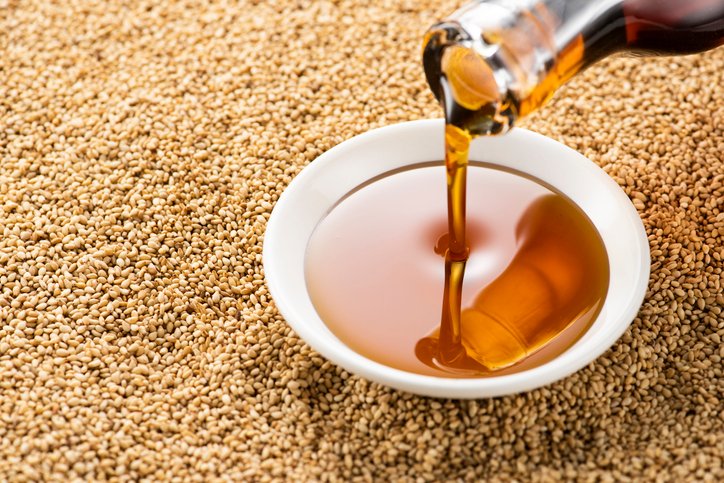
Uses of Korean Sesame Oil in Korean Cuisine
Incorporating sesame oil in marinades
One of the primary uses of Korean sesame oil in Korean cuisine is in marinades. The rich flavor of the sesame oil complements and enhances the flavors of the other ingredients in the marinade. Whether used for meat, poultry, or vegetables, sesame oil adds a savory and aromatic element to the marinade, resulting in tender and flavorful dishes. It is often combined with soy sauce, garlic, ginger, and other seasonings to create a well-rounded marinade.
Sesame oil in seasonings and dipping sauces
Sesame oil is also commonly used in seasonings and dipping sauces in Korean cuisine. It adds depth and complexity to these condiments, enhancing their overall flavor. For example, sesame oil is a key ingredient in ssamjang, a popular dipping sauce made with Korean chili paste, soybean paste, garlic, and sugar. The sesame oil balances the spiciness and adds a rich and nutty undertone to the sauce.
Finishing dishes with sesame oil
In addition to being used in marinades and seasonings, Korean sesame oil is often used as a finishing oil. Just a drizzle of sesame oil over a finished dish can elevate the flavors and add a delightful richness. It is commonly used to finish stir-fries, noodle dishes, soups, and rice bowls, imparting a final burst of flavor and fragrance. The light yet distinct flavor of sesame oil adds the perfect finishing touch to many Korean dishes.
The Different Varieties of Sesame Oil
Overview of sesame oil varieties
There are different varieties of sesame oil available, each with its own unique characteristics and uses. While the most commonly used variety is toasted or roasted Korean sesame oil, there are also untoasted varieties available. Each variety has its own distinct flavor and can be used for different purposes in Korean cuisine.
Toasted or roasted Korean sesame oil
Toasted or roasted Korean sesame oil is the most flavorful and commonly used variety in Korean cooking. The sesame seeds are first roasted before being pressed, resulting in a dark-colored oil with a robust flavor. This variety is often used for its rich nuttiness and slight smokiness, which adds depth and complexity to dishes. The toasted sesame oil is versatile and works well as a marinade, seasoning, and finishing oil.
Common usage of Korean sesame oil
Korean sesame oil is an essential ingredient in various Korean dishes. It is used in everything from soups and stews to stir-fries and braises. The toasted variety is commonly used for its strong nutty flavor and aroma. Its versatility allows it to be incorporated into a wide range of recipes, enhancing the overall taste and providing an authentic Korean touch.
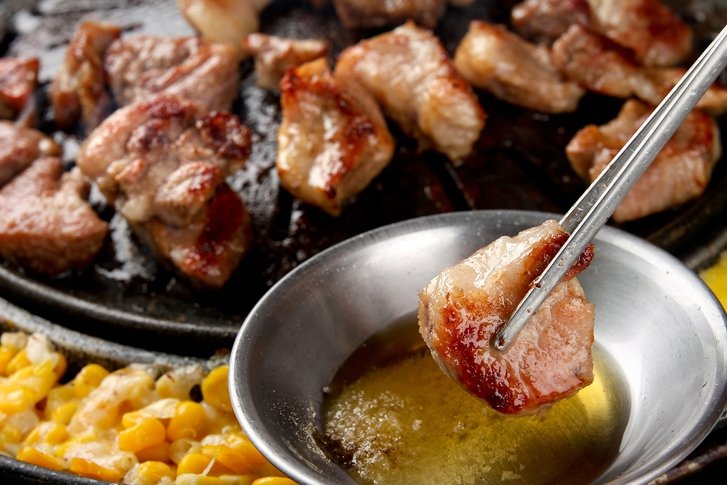
Storage and Shelf Life of Sesame Oil
Longevity of sesame oil
Sesame oil has a long shelf life and can be stored for many months, unopened, in cool temperatures. The high oil content of sesame seeds helps prolong the oil’s freshness and prevents it from going rancid quickly. Proper storage is essential to maintain the quality and flavor of sesame oil.
Proper storage methods
To ensure the longevity of sesame oil, it is best to store it in a cool, dark place, away from direct sunlight. Heat and light can accelerate the oxidation process and deteriorate the oil’s quality. It is advisable to keep the bottle tightly sealed to minimize exposure to air, which can also contribute to the oil’s degradation.
Shelf life after opening
Once opened, sesame oil should be consumed within a reasonable period. While it can still be used for up to 6 months after opening, it is recommended to use it sooner to enjoy the oil at its freshest and most flavorful. It is advisable to refrigerate opened sesame oil to slow down the oxidation process and maintain its freshness for as long as possible.
Recommended Brands of Korean Sesame Oil
Introduction to Jin Chamgireum
Jin Chamgireum is a well-known brand of Korean sesame oil that is highly regarded for its exceptional quality. It is made using a traditional and artisanal method, ensuring the utmost authenticity and flavor. Jin Chamgireum sesame oil has a deep and rich nutty flavor with a hint of smokiness, making it an excellent choice for various Korean dishes.
Ottogi Premium Roasted Sesame Oil
Ottogi is another reputable brand that offers premium roasted sesame oil. Known for its high-quality products, Ottogi ensures that their sesame oil is made from carefully selected sesame seeds and undergoes a meticulous roasting process. The result is a rich and aromatic oil that adds a delightful depth of flavor to Korean dishes.
Flavor and aroma comparison
Both Jin Chamgireum and Ottogi Premium Roasted Sesame Oil are known for their exceptional flavor and aroma. However, there may be subtle differences in their profiles due to variations in production methods and sesame seed selection. It is recommended to try both brands and decide which one best suits your taste preferences.
Cultural Significance and Health Benefits
Sesame oil in Korean culture
Sesame oil holds deep cultural significance in Korea and is an integral part of Korean culinary traditions. It is often associated with traditional Korean dishes and is a symbol of authentic Korean cuisine. Sesame oil is used during special occasions and celebrations, representing good luck, prosperity, and the preservation of cultural heritage.
Beliefs regarding health benefits
In addition to its culinary importance, sesame oil is also believed to have various health benefits in Korean culture. It is considered to be good for gut health, as it aids in digestion and promotes a healthy digestive system. Sesame oil is also believed to have properties that promote skin healing and contribute to overall heart health. While scientific research is not conclusive on these claims, sesame oil remains a cherished ingredient in Korean households for its perceived health benefits.
Gut health, skin healing, and heart health
In Korean folk medicine, sesame oil has been used to treat digestive issues and promote a healthy gut. Its rich content of antioxidants and healthy fats is believed to support heart health by reducing cholesterol levels and maintaining cardiovascular function. Sesame oil is also valued for its potential skin healing properties, and it is often used in skincare routines to moisturize and nourish the skin.
Recipes Utilizing Korean Sesame Oil
Sweet Rice Bulgogi
Ingredients:
- 1 pound thinly sliced beef
- ¼ cup soy sauce
- 2 tablespoons honey
- 2 tablespoons Korean sesame oil
- 2 tablespoons minced garlic
- 1 tablespoon minced ginger
- 1 tablespoon brown sugar
- 1 tablespoon rice wine or mirin
- 1 teaspoon sesame seeds (for garnish)
- Fresh cilantro or green onions (for garnish)
Instructions:
- In a bowl, combine soy sauce, honey, Korean sesame oil, minced garlic, minced ginger, brown sugar, and rice wine.
- Add the thinly sliced beef to the marinade. Let it marinate for at least 30 minutes, or refrigerate overnight for maximum flavor.
- Heat a skillet over medium-high heat and add the marinated beef, along with the marinade. Cook until the beef is fully cooked and caramelized, about 5-7 minutes.
- Serve the Sweet Rice Bulgogi over steamed rice, garnished with sesame seeds and fresh cilantro or green onions. Drizzle with a little more Korean sesame oil for an extra burst of flavor.
Bean Sprouts Recipe for Korean Sukju Namul

Ingredients:
- 2 cups bean sprouts
- 1 tablespoon soy sauce
- 1 tablespoon Korean sesame oil
- 1 tablespoon sesame seeds
- 1 clove garlic, minced
- 1 green onion, chopped
- Salt, to taste
Instructions:
- Bring a pot of water to a boil and blanch the bean sprouts for about 1-2 minutes. Drain and rinse under cold water to stop the cooking process.
- In a mixing bowl, combine soy sauce, Korean sesame oil, sesame seeds, minced garlic, chopped green onion, and a pinch of salt.
- Add the blanched bean sprouts to the mixture and toss until well coated.
- Serve the Sukju Namul as a side dish or topping for bibimbap or rice bowls. The nutty flavor of Korean sesame oil will enhance the overall taste of the dish.
Dolsot Bibimbap (Korean Stone Pot Rice Bowl)
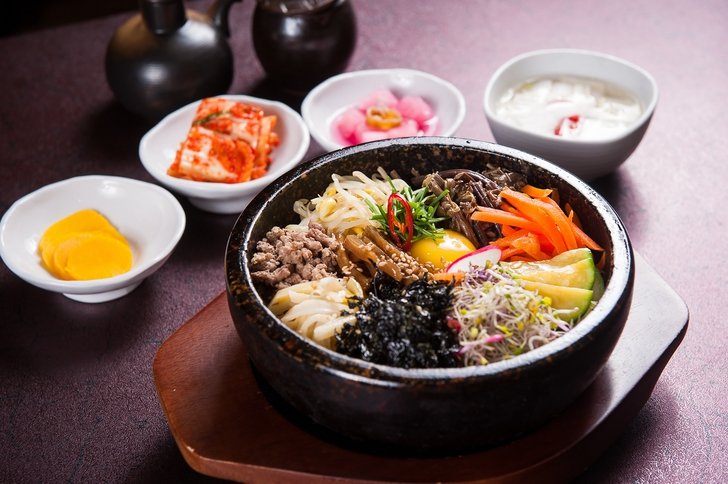
Ingredients:
- 2 cups cooked rice
- 1 carrot, julienned
- 1 zucchini, julienned
- 1 cup spinach, blanched and squeezed
- 1 cup bean sprouts, blanched
- 4 ounces beef, thinly sliced and marinated in soy sauce and Korean sesame oil
- 2 eggs
- Gochujang (Korean chili paste), to taste
- Kimchi, for serving
- Korean sesame oil, for drizzling
Instructions:
- Prepare a stone pot or a regular bowl by brushing the inside with Korean sesame oil.
- Place the cooked rice in the pot as the base.
- Arrange the julienned carrots, zucchini, blanched spinach, bean sprouts, and marinated beef on top of the rice.
- Heat the stone pot over medium heat until it sizzles.
- Crack an egg onto the center of the ingredients in the pot and cover with a lid. Let it cook for a few minutes until the egg is slightly runny.
- Remove the lid and drizzle Korean sesame oil over the ingredients.
- Mix everything together before eating, adding gochujang and kimchi to taste. The sesame oil will add a rich and nutty flavor to the bibimbap, creating a delicious harmony of tastes.
Korean Honey Pastry (Yakgwa or Yakwa)
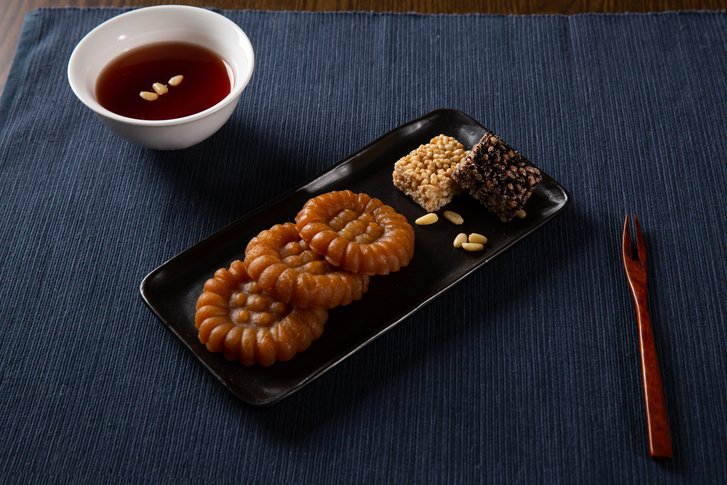
Ingredients: For the dough:
- 2 cups all-purpose flour
- 2 tablespoons honey
- 2 tablespoons Korean sesame oil
- ¼ teaspoon salt
- ¼ teaspoon baking soda
- ½ cup cold water
For the syrup:
- 1 cup honey
- ½ cup water
- 1 tablespoon ginger juice (optional)
- Sesame seeds, for garnish
Instructions:
- In a mixing bowl, combine flour, honey, Korean sesame oil, salt, and baking soda. Gradually add cold water and knead the dough until smooth.
- Cover the dough with a damp cloth and let it rest for 30 minutes.
- Roll out the dough to a thickness of about ¼ inch. Cut it into rectangular shapes, approximately 2 inches long and 1 inch wide.
- Heat oil in a deep pan or pot for frying.
- Deep-fry the dough rectangles in batches until they turn golden brown.
- In a separate saucepan, combine honey, water, and ginger juice (optional). Bring to a boil and simmer for a few minutes.
- Dip the fried dough rectangles into the honey syrup, coating them evenly.
- Place the coated pastries on a wire rack to let the excess syrup drip off.
- Garnish with sesame seeds before serving. The subtle nuttiness of Korean sesame oil will enhance the flavors of the Yakgwa, creating a delightful and indulgent treat.
In conclusion, Korean sesame oil is an indispensable ingredient in Korean cuisine. Its rich, nutty flavor and aroma add depth and complexity to dishes, and it is used in marinades, seasonings, dipping sauces, and as a finishing oil. With its long shelf life and versatile usage, Korean sesame oil is a pantry staple for anyone interested in exploring authentic Korean flavors. Whether it’s the traditional methods of making sesame oil, the flavor profiles, the different varieties, or the recommended brands, Korean sesame oil offers a cultural and culinary experience that cannot be missed.


